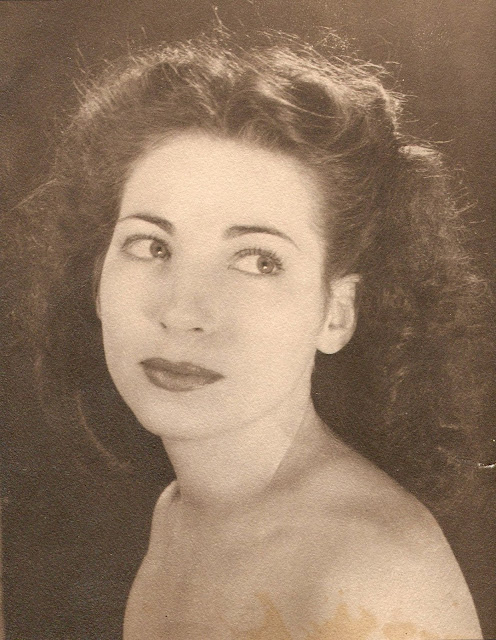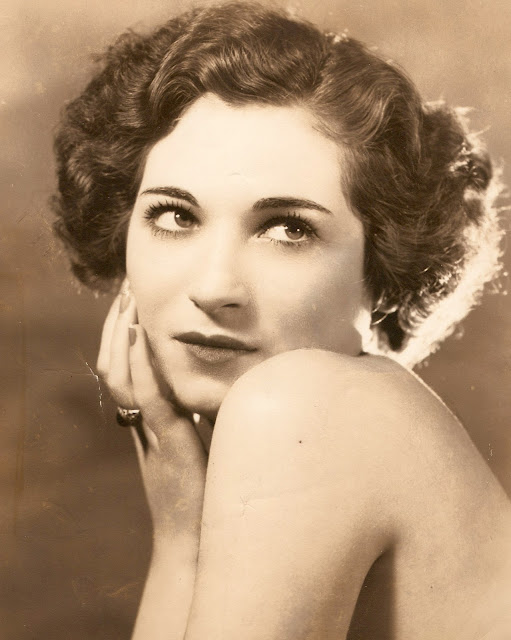Mitzi Scott
Dedicated with love to Mrs. Raymond Scott, who everyone called "Mitzi" (1918-2012)
Monday, August 13, 2012
Wednesday, July 18, 2012
Mitzi: "An American Girl on the Home Front"
Today would have been Mitzi's 94th birthday, and in her honor I've uploaded a superb mini-documentary — watch it here <<<
Warner Bros. produced the movie, "MOLLY: AN AMERICAN GIRL ON THE HOME FRONT," as part of the American Girl series. Molly is a young aspiring dancer in a small midwestern town during World War II, who passionately wants to win the starring role of "Miss Victory" in her grade school Christmas gala tap dance review. (Cast includes Molly Ringwald.) For the DVD, they searched for an entertainer from those years, and were lucky to find Mitzi, Raymond Scott's 3rd wife: "A compelling documentary featuring Mitzi Scott, an 88-year-old former USO dancer and hostess, relaying her personal history of dancing at home and with soldiers on leave, making something personal and dear to her — dance — into the ultimate patriotic act."
The 2nd part of this Vimeo video is an excerpt from the full-length documentary film, DECONSTRUCTING DAD, with Mitzi remembering her first date with—and marriage—to Raymond Scott. [DVD info: ScottDoc.com]
Both clips were screened at the reception following Mitzi's memorial service on June 22, 2012.
Warner Bros. produced the movie, "MOLLY: AN AMERICAN GIRL ON THE HOME FRONT," as part of the American Girl series. Molly is a young aspiring dancer in a small midwestern town during World War II, who passionately wants to win the starring role of "Miss Victory" in her grade school Christmas gala tap dance review. (Cast includes Molly Ringwald.) For the DVD, they searched for an entertainer from those years, and were lucky to find Mitzi, Raymond Scott's 3rd wife: "A compelling documentary featuring Mitzi Scott, an 88-year-old former USO dancer and hostess, relaying her personal history of dancing at home and with soldiers on leave, making something personal and dear to her — dance — into the ultimate patriotic act."
The 2nd part of this Vimeo video is an excerpt from the full-length documentary film, DECONSTRUCTING DAD, with Mitzi remembering her first date with—and marriage—to Raymond Scott. [DVD info: ScottDoc.com]
Both clips were screened at the reception following Mitzi's memorial service on June 22, 2012.
Saturday, June 16, 2012
Witness to history
When Mitzi Curtis married Raymond Scott in 1967, Scott's best days as a working professional were behind him.
Three decades before, he'd become an overnight radio and recording sensation with his Quintette, spent a year working in Hollywood films, and was a ubiquitous figure on radio with his popular orchestras in the late 1930s and early '40s. He was sought by the press, and journalists found Scott's uncompromising (and often impertinent) opinions worth quoting. He wasn't just a music figure—he was an idea man. A restless one.
In 1942 when he was appointed music director of the CBS radio network, his groundbreaking and controversial cross-racial hiring made headlines. Scott composed the Broadway musical Lute Song in 1946, and for seven years in the 1950s conducted the orchestra on TV's chart countdown program Your Hit Parade (on which his second wife, Dorothy Collins, was a major star). In 1957 he composed a 12-part suite, A Yank in Europe, for British bandleader Ted Heath, whose recording was released on Decca in the UK and the US. Raymond was an ambitious, high-earning celebrity, commanding worldwide recognition and artistic respect.
But by the late 1960s, despite what music fans now acknowledge as his pioneering work in electronic music and instrument design, Scott was no longer in the public eye—or ear. His once-popular recordings were relegated to the nostalgia bin. His royalty stream was diminishing. Instead of appearing on TV and concert stages, he sequestered himself in his studio-cum-laboratory surrounded by circuit boards, soldering irons, and patch bays. No longer employing musicians, his sidemen were machines, many of which he invented, built, and named.
Mitzi married a formerly famous man. With the exception of Scott's hiring by Motown in the early 1970s (an episode that apparently went unnoticed in the media), Scott's professional stature was fading. His physical and mental health were also in decline, along with his finances.
These were eventful, if quixotic years in Scott's evolution as a mad musical scientist. He doggedly developed his Electronium—at first following his own curiosity, then later adapting it at the request of his Motown patron, Berry Gordy. He tinkered with countless gadgets, some musical, some intended as household appliances or fixtures. He attempted to incorporate the latest analog and digital advances, including computers, in his devices. He hired colleagues like Tom Rhea to help mass-market his inventions, including the Clavivox (all without success). While his products failed to gain a commercial foothold, he saw his longtime buddy Robert Moog's name become synonymous with keyboards that revolutionized pop music and the field of electronic instruments.
 |
| Photo: Bianca Bob (1993) |
Just before her husband's death in 1994, she began to witness the public rediscovery of his legacy. For thirty years Raymond Scott had been a footnote in music history books—if he was mentioned at all. His name was commonly confused with Raymond Chandler and Randolph Scott. He would have been a perfect subject for a "Where Are They Now?" profile—if anyone remembered, or cared. When his music began resurfacing in the 1990s on CDs and in Ren & Stimpy episodes, he was mistakenly credited with composing Looney Tunes scores (actually the work of Carl Stalling). His music regained the spotlight, but Raymond still largely remained in the shadows, except among the cognoscenti. During the 1990s, any journalist's passing mention of Scott required a frame of reference.
But within a decade of his death, music writers and culture mavens were name-dropping Raymond Scott—and explanations were no longer necessary. He became a critical darling, and a musicians' favorite. He was celebrated, revered, studied. His compositions were recorded and reinterpreted, and new bands were devoted to his repertoire. His titles began reappearing in symphonic pops concerts. His works were licensed for major films and new cartoons. His son Stan produced a poignant documentary about his dad.
For the last decade and a half of her life, Mitzi Scott was the widow of a famous man.
Labels:
1960s,
1970s,
1990s,
2000s,
biography,
Electronium,
Los Angeles,
music,
New York,
photos,
Raymond Scott,
Robert Moog
Friday, June 15, 2012
Tuesday, June 12, 2012
Powerhouse: The Musical
How many people who aren't celebrities get to see themselves portrayed onstage at a New York theater? Mitzi Scott is among the lucky ones on two counts: 1) she was portrayed favorably in a musical production about her late husband, and 2) having lived a long life allowed her to bask in that glory—Mitzi was 91 when the show opened!
Powerhouse: The Musical, produced by Sinking Ship Production, had an extended run during the 2009 New York International Fringe Festival. As described by the producers, the show used:
live action and puppetry, swing dancing and physical comedy to tell the story of a brilliant man who wrote music that nearly every American has heard but almost no one can identify.Mitzi was portrayed by the lovely Clare McNulty, pictured above (4th from left, alongside Mitzi) with the cast, and below (with Scott's grandaughter Kathy Makover, Scott's daughter Carrie Makover, and Scott's son Stan Warnow at right).
More information about the show can be found at the Raymond Scott blog.
Sunday, June 10, 2012
Spelling Errors
At a local shelter where I volunteer, they allow me to name the dogs — they spelled it wrong — but in honor of Mitzi's commitment to strays, I named last week's new arrival after her. The Spanish ventriloquist Señor Wences made a similar error when he met "Mitsy" (I found this photo in her house in March, 2012):
Thursday, June 7, 2012
Suite For Violin And Piano
Later this year, our friends at Basta will present the first commercial release of Raymond Scott's Suite for Violin and Piano, believed to have been composed in 1949. A 1950 recording by violinist Arnold Eidus and pianist Carlo Bussotti made at a Carnegie Hall studio will be coupled with a 2004 Dutch recording by Davide Rossi and Ramon Dor (produced by Beau Hunks leader Gert-Jan Blom). The liner notes for the release will include this recollection by Mitzi Scott about an incident with her future husband in 1966:
Mitzi insisted that Raymond's having composed the Suite for Violin and Piano was a determining factor for entering into a relationship with him. They were married on January 18, 1967.I had known Raymond for a couple of weeks. I knew he was an orchestra conductor and had written "Powerhouse" and "The Toy Trumpet." We were at his studio one day and he asked what kind of music I liked. I told him I liked classical, and that one of my favorites was the Tchaikovsky Violin Concerto. He said, "I'm going to play something for you," but he didn't say what. He put on this record of a duet for violin and piano. I thought it was so beautiful, but I didn't recognize it. I know works by Tchaikovsky, Prokofiev, and others, but I'd never heard this piece. I loved it. I asked him who wrote it. He had a modest look on his face, and he surprised me when he answered, "I did."
The CD cover above was designed by Piet Schreuders, who adapted a mid-1940s illustration by Jim Flora.
Saturday, May 26, 2012
behind the plate
This amazingly cute photo of Mitzi in catcher's gear was probably taken in the 1940s. We don't know the location, nor do we know if Mitzi had any interest in the game. In all my years of conversation with Mitzi, she occasionally talked about her dancing days but never mentioned baseball. Obviously this photo was a set-up, and it's amusing that both offense and defense are wearing the same uniform!
Wednesday, May 16, 2012
Subscribe to:
Posts (Atom)













